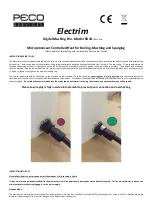
ioLogik 2500 Series
Cellular Network Setup and Configuration (for cellular models)
6-10
Unique ID
The unique ID is used for remote action functions. For detailed information, refer to the Click&Go Plus
User’s Manual.
Heartbeat (sec.)
The heartbeat is used to determine whether or not the connection between an ioLogik device and the
cellular data access server is still active.
Cellular Network Connection
The dynamic IP addresses commonly used for cellular connections make it hard for control systems to link
to cellular data acquisition devices. With Moxa’s MX-AOPC server, SCADA/HMI users can easily connect to
field I/O devices. For web-based applications, Moxa’s cellular data access utility provides an ideal way to
seamlessly connect to remote cellular IO units.
MX-AOPC Server (for SCADA/HMI users)
To allow private networks to get around the connectivity issues raised by edge devices configured with
dynamically assigned private IP addresses, typically operators purchase high-cost static IP addresses for
each device, with IPs provided by a DDNS or VPN service purchased from an MVNO (Mobile Virtual Network
Operator). Even with DDNS technology, SCADA systems need to assign resources to manage the DDNS
servers. As an alternative, Moxa’s Cellular remote I/O devices use Moxa’s proprietary “push” technology,
called MX-AOPC Server.
With Moxa’s powerful MX-AOPC Server support, communications efficiency between ioLogik 2500-
GPRS/HSPA devices and the central SCADA are substantially improved. Moxa’s MX-AOPC Server’s non-
polling communications architecture supports the standard OPC protocol, but instead of requiring the
SCADA to poll edge devices it allows edge devices to actively push communications to the central
HMI/SCADA system, empowering the network with real time I/O updates while substantially cutting
network overhead.
Unlike the requirements of a traditional OPC server (where remote I/O devices must use a static IP so they
may be successfully polled), MX-AOPC Server and ioLogik products allow engineers the flexibility of
configuring edge devices with dynamic IP addresses. Even when using DHCP addressing, ioLogik devices
can push messages back to the OPC server, allowing wide area I/O networks using dynamic IP cellular
accounts. Using traditional polling OPC applications, I/O devices cannot make use of this approach.















































